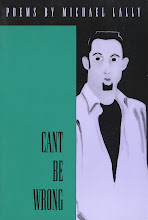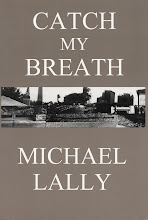
For my recent birthday, my friend Ray gave me a couple of books, including WITH BILLIE, A New Look At the Unforgettable Lady Day. I loved it.
The “author,” Julia Blackburn, is more like an editor and commentator. She uses a series of interviews, most of them done c. 1971 by Linda Kuehl with people who knew Billie Holiday at various times in her life, including when she was a girl.
Blackburn doesn’t try to make them coalesce into one perspective, she lets each talk for themselves, even when their memories of specific shared events differ. The voices of these old jazz musicians and “pimps” (called this either by their own account or descriptions from others who knew them) and various lovers of Billie’s and others she knew, are so real and present, it’s as if they’re still alive, which they are in this book.
The portrait that emerges of Billie, is one that is contradictory and many faceted and yet eventually a fully realized woman emerges in all her genius and flawed humanity. I highly recommend it, especially to those who only know the seemingly pretty contrived version of her story LADY SINGS THE BLUES.

POSITIVELY MAIN STREET Bob Dylan’s Minnesota by Toby Thompson partially came out in serial form in The Village Voice back in 1969, where I first read it. Not long afterward, it was expanded into a book that was one of the first to expose Dylan’s true past as opposed to the myths he deliberately spread about his origins (teenage hobo, carnival worker, orphan, etc.).
But it does so lovingly and honestly, if with the expected self-indulgence of the time and the author’s age, as it also tells the story of how a twenty-four-year-old budding journalist jumps in his VW bug one day and drives to Hibbing, Minnesota, to discover where the ‘60s icon really came from and what his back story really might have been.
He ends up not only interviewing “the Girl from the North Country,” Echo Haelstrom, and “Bob’s” “Jewish mother” and brother and teachers etc., but also filling in for Dylan among his old friends and acquaintances, playing Dylan’s songs on the guitar and harmonica and singing them, in a way that may have seemed stratingly revolutionary at the time for a journalist to do, he actually recreates a bit of Dylan’s existence as his own.
I knew Thompson back then as a poet in some of the same little mags I published in, and later came to know him personally (he interviewed me and included part of my life story and poetry in the “Sex” chapter (!) of his 1979 book The ‘60s Report, which chronicled what had happened to various ‘60s figures in the ‘70s).
POSITIVELY MAIN STREET was a revelation back then, and surprisingly, still is in its latest edition (with an intelligent interview with the author included, as well as some updates). As much as we think we know about Dylan, the 1960s, and “the New Journalism” that Tom Wolfe and Hunter Thompson came to represent, this book adds dimensions and nuances and insights into all these things, and more, than we get anywhere else.
I’m glad it’s back in print.

THE WAY THE WIND BLEW, A History of the Weather Underground by Ron Jacobs was another gift from my friend Ray. I’m grateful for it too, even though it’s a pretty dry rendering of an era I was a part of—many of the events recorded in it I was at, and the arguments I took part in, though I was never a part of the Weather Underground.
But dry as it mostly is, it still is a pretty comprehensive, yet compact, chronology of the development of a “revolutionary” organization that helped, in some ways, to destroy ”the movement” for a different kind of “America” that many of us were working to bring about back then.
In part we succeeded: the View Nam War ended, our troops were brought home, no more deaths from that fiasco would plague us; legal racism and segregation were defeated and equality of opportunity became more of a possibility than it had been; government’s intrusion into our private lives was lessened (at least until the Patriot Act and the Homeland Security Act of this administration); etc.
Maybe the most lasting change we helped bring about was the opening up of the nominating process for presidential and other candidates and the end of the cultural and stylistic conformity that had dominated the 1950s.
This book addresses most of those changes, but from the perspective of the factional fights over how best to bring about these changes and/or what they meant for “the revolution” and how to use them to further the political ends of various factions on the left, and in particular the impact of the “Weather” faction of SDS on the left, especially after they embraced violence and went “underground.”
If you weren’t there and don’t have any previous knowledge of the issues and the factionalism, it may be not only too dry, but too obscure for you. But for me, it was a clarification of some more vague memories, as well as a reminder of why I made the decisions I did at the time, for instance to oppose the choices this group of mostly privileged college students made no matter how well intentioned.
















4 comments:
i love those posters. billie had soul and it shows even in advertising.
sorry, covers i meant..
... now i also read your entry...still love those covers..
Where i grew up WU were seen as heroes, but I'm not in a mood to read that book anyway.
I'm ambivalent about their role. Maybe it was just an extreme expression of the times and actually necessary to opening things up. Or, as you suggest, it was over the top and destroyed the opportunity for real long lasting change. I have no idea. The other two books i will try to get my hands on as soon as I get close to a book store.
Both artists being on my fav list.
My new cover to "Positively Main Street" is more Matt Dillon than Bob Dylan, but I like it anyway. The original cover of the Coward McCann hardback, was of Hoboken's Washington Street, if I'm not mistaken. And meant to convey the bleak mood of Hibbing, Minnesota's Howard Street. Both streets are main drags. The cover for the Warner Paperback Library edition of "PMS" was by Milton Glaser, and reminiscent of his famous psychedelic hair poster of Dylan. It is my favorite. I wrote Glaser in 1972, in a beguilingly hippieish fashion, to say how much I liked it, and he sent me the original sketch. Those were the days.
Post a Comment